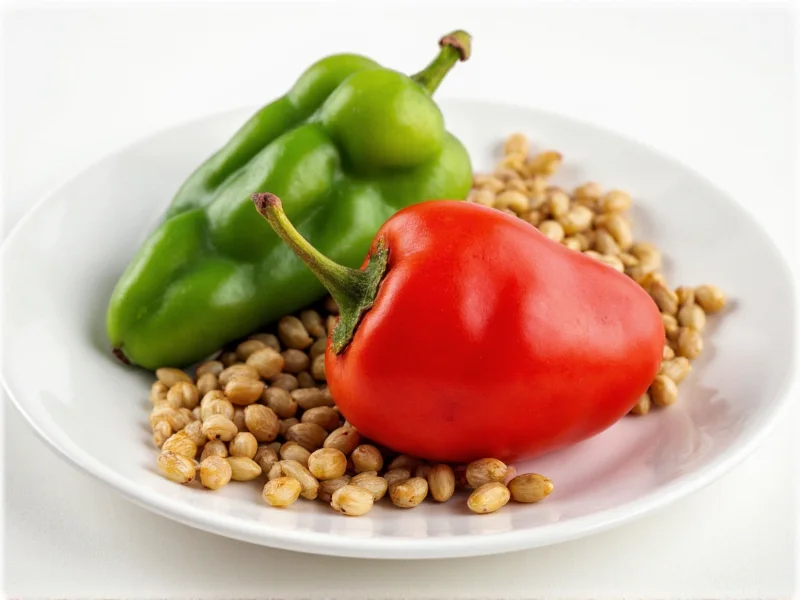Understanding the relationship between peppercorns and pepper resolves a common culinary confusion. Many home cooks wonder is peppercorn pepper the same thing, especially when recipes specify “whole peppercorns” versus “ground pepper.” The answer lies in the plant biology and processing techniques that transform these small berries into the world’s most traded spice.
What Exactly Is a Peppercorn?
Peppercorns are the fruit of Piper nigrum, a perennial flowering vine native to South India. Despite their name, they’re not “corns” in the botanical sense but rather small, round drupes (berries). When fresh, these berries are green and soft, measuring approximately 5mm in diameter. The term “peppercorn” specifically refers to these berries after they’ve been dried—a process that concentrates their piperine content, creating pepper’s characteristic heat.
How Peppercorns Become Different Colored Peppers
The color variations in pepper stem entirely from harvest timing and processing:
| Pepper Type | Harvest Stage | Processing Method | Flavor Profile |
|---|---|---|---|
| Black Peppercorn | Half-ripe (green) | Sun-dried until shriveled and black | Sharp, complex, woody with moderate heat |
| White Peppercorn | Fully ripe (red) | Soaked to remove outer layer, then dried | Milder, earthier, less complex |
| Green Peppercorn | Unripe (green) | Quick-dried or brined to preserve color | Fresh, herbal, subtle heat |
| Red Peppercorn | Fully ripe (red) | Dried immediately without soaking | Fruity, sweet, floral notes |
Peppercorn vs. Other “Peppers”: Clarifying the Confusion
Many people searching is peppercorn pepper different from chili peppers encounter terminology confusion. True pepper (from Piper nigrum) shares no botanical relationship with chili peppers (genus Capsicum). This misnomer originated when European traders applied the term “pepper” to New World chilies due to their shared pungency.
Key distinctions include:
- Chemical compounds: Piperine creates pepper’s heat; capsaicin creates chili heat
- Plant family: Pepper belongs to Piperaceae; chilies belong to Solanaceae
- Heat sensation: Pepper creates a sharp, immediate warmth; chilies produce lingering burning
Culinary Applications of Whole Peppercorns
Understanding why recipes call for whole peppercorns instead of ground pepper reveals important culinary principles. Whole peppercorns provide:
- Controlled flavor release: Ideal for pickling brines, marinades, and stocks where gradual infusion is desired
- Textural contrast: Adds subtle crunch in dishes like steak au poivre
- Preserved potency: Whole peppercorns retain essential oils 3-4 times longer than pre-ground pepper
Chefs often use specific peppercorn blends like Tellicherry (large, mature black peppercorns) for premium dishes or Sichuan peppercorns (technically a different plant) for their unique numbing effect in Asian cuisine.
Storage and Selection Guidelines
For optimal freshness when working with peppercorn pepper varieties:
- Storage: Keep whole peppercorns in airtight containers away from light and moisture. Properly stored, they maintain peak flavor for 2-3 years versus 4-6 months for pre-ground pepper
- Selection: Choose uniform, heavy-for-size peppercorns without cracks. High-quality black peppercorns should have visible oil glands
- Grinding: Always grind peppercorns immediately before use. Pre-ground pepper loses 70% of its volatile oils within 15 minutes of grinding
Historical Context of Pepper Terminology
The term “peppercorn” dates to medieval European trade when these small berries were literally worth their weight in gold. Historical documents show peppercorns served as currency, with rental agreements sometimes specifying “one peppercorn” as symbolic payment. This historical value explains why we still refer to the whole berry as a “corn” despite its botanical inaccuracy.











 浙公网安备
33010002000092号
浙公网安备
33010002000092号 浙B2-20120091-4
浙B2-20120091-4